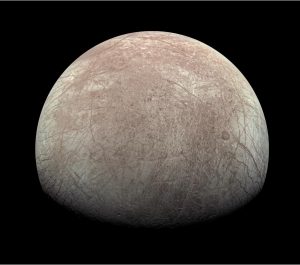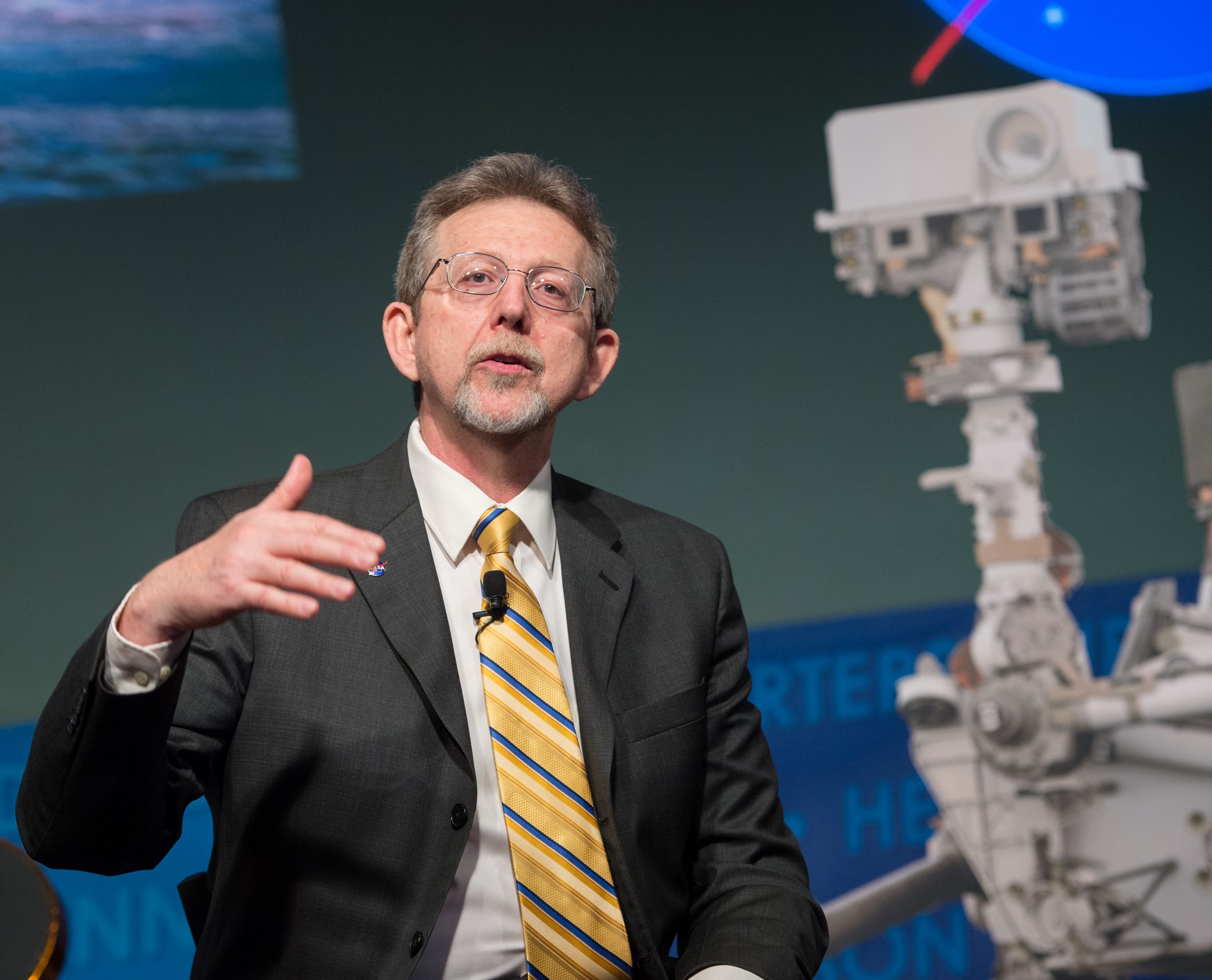
After 42 years at NASA, Jim Green describes the driving force behind the phenomenal progress in space science: The search for the ultimate answer
“It’s been 42 years. I had to make sure it was 42, because that’s the answer!”
Jim Green joined NASA’s Marshall Space Flight Center in 1980. It was the start of a career that would see Green discover solar superstorms, dive with the astronauts training underwater to repair the Hubble Space Telescope, work on over two dozen missions, and double the budget of NASA’s Planetary Science Division during his tenure as its longest serving director. Green retired in 2022, after 42 years at the world’s largest space agency.
The significance of 42 will be appreciated by science fiction fans of “The Hitchhiker’s Guide to the Galaxy”, where a supercomputer calculates this figure as the baffling answer to the “Ultimate Question of Life, the Universe and Everything”. But if you ask Green what he believes is the answer to what drove the phenomenal progress in space science during his career, he will tell you that it is disruptive technology.
Disruption 1: the SPAN network
In 1985, the International Sun-Earth Explorer 3 received instructions from Earth to leave the orbit where it had been investigating the interaction of the solar wind with the Earth’s magnetic field, and head into deep space. Through a complex series of manoeuvres, the spacecraft would intercept comet Giacobini-Zinner and fly through its tail. This was to be the first close encounter of a comet by a spacecraft, and pressure was on to broadcast the event live.
“How are you going to do a mission like flying through the tail of a comet in real time?” asks Green. “The data we were receiving from the mission was a month old!”
Expectations had been raised by the Voyager spacecraft, whose images of the outer planets had been shown by the NASA Jet Propulsion Laboratory at a press conference shortly after the spacecraft fly-by. But the situation with the International Sun-Earth Explorer 3, now renamed the International Cometary Explorer (ICE), was more complex. The mission was a joint effort between NASA and the European Space Agency (ESA). Data from the spacecraft was received through NASA’s Deep Space Network and transmitted to the Goddard Space Flight Center in Baltimore. But the analysis was performed at the European Space Operations Center in Darmstadt, Germany. The data therefore had to be recorded onto a data tape and mailed to Europe. This was not a quick process. Nor was it possible to run the analysis at Goddard.
“At that time, everyone was using completely different machines,” explains Green. “So the ability to take all those programs and bring them to one place to run was zero. Forget it! It’s never going to work! We had to get them the data.”
Green’s plan was perhaps more audacious than the mission itself. He convinced NASA headquarters to create the first transatlantic data network between NASA and ESA, so that the data could be sent digitally.
While a global internet was still many years away, NASA did already have its own internet thanks to Green. Green had started a network called SPAN (Space Physics Analysis Network) after joining Marshal Space Flight Center in 1980 so that data could quickly shared between researchers at the institute. Green connected the ESA Darmstadt centre to SPAN, who then connected the other European groups involved in the ICE mission.
This early network could handle remote log-on to computers, electronic mail, and file transfer, but it was not wide spread even through NASA itself. The mission data from ICE was therefore received at one building at the Goddard Space Flight Center and written onto data tapes that were then driven to a second building where the data could be uploaded onto the network and transmitted to ESA.
“We’re now so used to ubiquitous networking, but this was the start,” describes Green. “So you have to assume there’s no networking at all. How do you start putting this in? What are the pieces you do first?”
Analysis of the ICE mission data was performed at ESA, who then used the SPAN network to transmit the final results from Germany back to NASA. A few hours after the spacecraft encountered comet Giacobini-Zinner, a press conference was held. The event ran identically to the Voyager encounter with the planets, but the results presented had all been acquired on remote computers.
To date, ICE remains the only spacecraft that has flown through the tail of a comet. As it passed through the trailing vapours, the spacecraft detected a magnetic field that was not generated within the comet itself, but induced by the solar wind. It was a measurement that ICE was perfectly equipped to make, because the spacecraft had originally been designed to study the Earth’s magnetic field.

SIDE STORY: Discovering solar superstorms
[click to open]
“We used brand new technology on an old mission and became the first to go to a comet!” recalls Green. “And then I never told the communication people that we were finished with the transatlantic link. We kept it up and operating, linking NASA and ESA.”
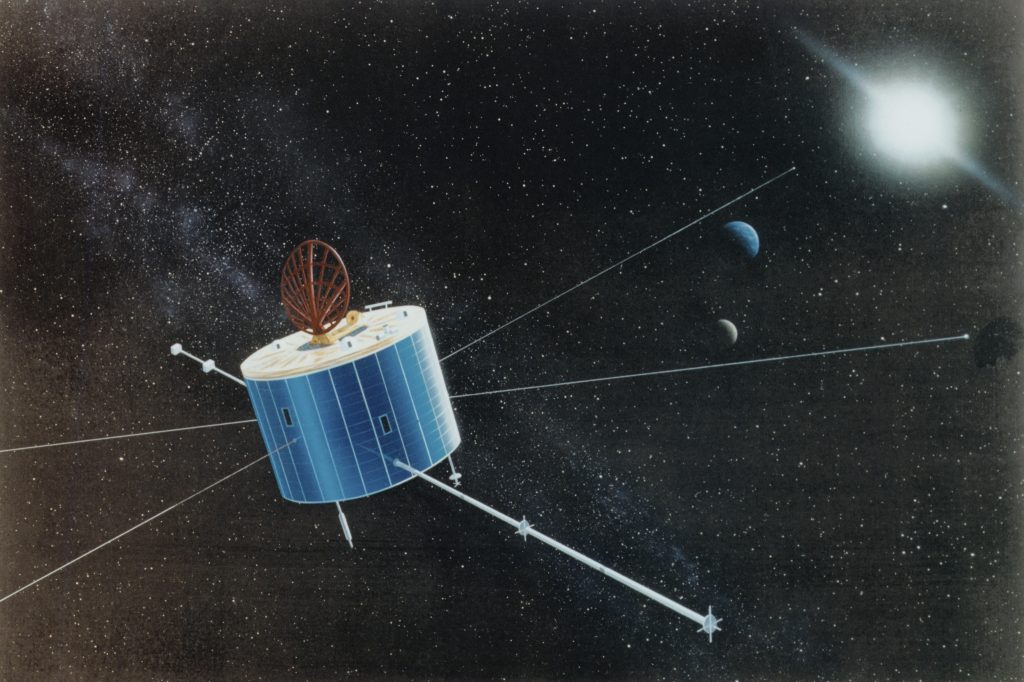
In 1987, Green added ISAS to the network (JAXA was not founded until 2003). With the rapid connectivity this enabled, talk started on a mission that would become Geotail. Launched in 1992, Geotail explored the region of the Earth’s magnetic field that is being swept back away from the Sun by the solar wind. The mission retired at the end of 2022, after more than 30 years of joint operation by Japan and the US.
“Geotail would have happened even without the network, but it would have been much harder,” says Green. “We were moving into an era where space agencies wanted to cooperate. But building an instrument in the US, going to Japan and integrating it with the spacecraft, finding errors and problems, flying back and forth… foreign instruments are incredibly hard to do!”
The network between NASA and ISAS enabled many of the steps in the joint mission design to be performed remotely, as US researchers could log into the Japan computers and run the necessary programs to confirm the performance of their equipment.
In 1992, the Russian space agency also joined the computer network. And in the mid-1990s, the communication protocol for the network was changed from DCMP to the now familiar TCP/IP and SPAN merged with the growing global internet.
“The network was key to the science exploding,” says Green. “Now, we’ve completed an initial survey of our Solar System from Kuiper Belt Objects, through all the major planets, to the asteroids. We’ve been to comets. We’ve studied the Sun. The big telescopes like Hubble were launched. In 1980, we still had quite a bit to do. We hadn’t even orbited Mercury!”
Disruption #2: Hacker catching
Yet, putting NASA online was not without risks. In 1984, Green caught a group of school kids who had hacked into the NASA network.
“It made national news! Peter Jennings at night on ABC News was talking about the NASA network hack!” Green exclaimed. “The very next day I’m sitting in the office of Bill Lucas, the director of Marshall Space Flight Center, who is hopping mad at me, ready to pull out the network!”
The students had dialled telephone numbers at the Marshall Space Flight Center until they heard the characteristic screech that indicated a modem that was connecting to the internet via the phone lines. They then used the username and password of the administration login, which was always the same for computers of this type: a shocking security hole by today’s standards.
Meanwhile, Green was also logged onto SPAN to check which of the Marshall computers on the network had enough free memory to run one of his own research calculations. While checking the number of users on one particular machine, he noticed that the system administrator appeared to be logged in. However, the system administrator for Marshall at that time was on holiday in Jamaica.
“There’s no way Jeanette would ever touch anything to do with work during non-work hours, and she was on vacation!” recalled Green. “So I’m going… Whoa!… No way is that Jeanette! No way. Just forget that idea. Something is going on!”
Green traced the system administration login to a modem, supporting his suspicions that this was the hacker. He reported this to Marshall, who then contacted the FBI. It took several weeks with Green watching the network and reporting the rogue connections before the perpetrators were discovered. By this time, the kids had hacked into several other computers and even the telecommunications provider, AT&T.
“War Games had just come out,” remembers Green, referring to the movie where a teenager hacks into a government defence network and risks triggering a nuclear war. “That was the environment we were in.”

SIDE STORY: Diving to save Hubble
[click to open]
With the threat of the network being shut down, Green put together NASA’s first computer security response team. The group would catch 36 hackers over a ten year period, placing many of them in prison.
”Am I a scientist? A technologist? The IT guy?” Green jokes. “The bottom line is that I needed this so desperately to do my research, so I had to do it.”
Disruption #3: The World Wide Web
In the early 1990s, Green became head of the NASA National Space Science Data Center (NSSDC). NASA now had an online archive of about a terabyte of satellite data that could be rapidly accessed by scientists on the SPAN network. But an idea from a visiting faculty member at NSSDC would make information about NASA truly accessible. That idea was to join the World Wide Web. NSSDC therefore posted its first webpage.
“We were number 200 on the World Wide Web! There were only 200 webpages!” says Green.
A few years later as more NASA centres created websites, Green bought the web address “www.nasa.gov” and created a main page for NASA from which you could browse to the other centres. With the structure in place, the NASA centres started to expand and develop their online content. NASA’s World Wide Web presence had begun.
Disruption #4: Onto the Metaverse
These developments from the first network connection between remote institutes to the World Wide Web are what Green refers to as “disruptive technologies” because they revolutionise the way we are working together. The result of this new connectivity has repeatedly been an explosion of new discoveries. And the next disruptive technology that Green has his eye on is the metaverse.
”We’re going back to the Moon,” says Green. “We’re going to do this by creating partnerships where people are working like they’re side-by-side.”
Since retiring from NASA, Green has been teaching students from around the world in virtual reality. Green’s classroom is an Earth-orbiting spaceship that he helped design, and which seats about 80 students. As he talks, a life-sized model of NASA’s Perseverance rover appears on the classroom floor, and students can gather close to the Mars explorer to study its instruments, before watching the Martian helicopter, Ingenuity, take flight.
“There are several countries who are now moving into the space business and have signed the Artemis Accords,” explains Green, referring to the international agreement between the US, Japan and 18 other nations that aims to return humans to the Moon. “They want to get their general population more interested in space. So I’m teaching them in the metaverse!”
In the “The Hitchhiker’s Guide to the Galaxy”, the supercomputer that calculates the ultimate answer of 42 explains that this is the answer to a true ultimate question, which must be discovered by a computer even greater than itself. That computer turns out to be the planet Earth.
Green’s career suggests an interpretation where the ultimate answer is the disruptive technologies that connect the people on our planet, and that this allows us to dare even the most impossible questions.
Further information:
Marshall Space Flight Center (external site)
International Sun-Earth Explorer-3 / International Cometary Explorer (external site)
Geotail Mission




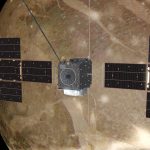 Previous Post
Previous Post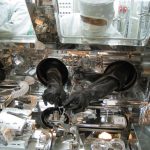 Next Post
Next Post

